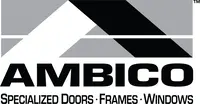Security Wood Doors & Steel Frames
It’s fine to seek professional help, but I urge everyone – no matter how big their portfolio – to truly understand every suggestion they’re given before acting.
- Home
- Security Wood Doors & Steel Frames


Let’s Start Work
Together
Please feel free to contact us. We will get back to you with 1-2 business days. Or just call us now.
General Description:
AMBICO’s Security Wood Doors & Steel Frames offer a robust solution for high-risk areas in behavioural health facilities, addressing the limitations of traditional wood door solutions. These doors combine the strength of a proprietary steel structural core with the elegance of hardwood door edges and two-ply veneer finish. The result is a secure door with the appealing look of wood, meeting the unique needs of behavioural health environments.
Product Details:
- Proprietary Steel Structural Core: The door core is constructed using AMBICO’s proprietary steel technology, providing exceptional strength and security.
- Hardwood Door Edges: The door edges are encased in hardwood, enhancing the aesthetic appeal while maintaining structural integrity.
- Two-Ply Veneer Finish: The doors feature a two-ply veneer and backer faces, offering a soft decorative finish to complement the surroundings.
- Anti-Barricade Technology: Optional Anti-Barricade technology is available for patient room applications, enabling staff access in case of barricades.
- Customizable Veneer Species: Security Wood Doors & Steel Frames are available with various veneer species, allowing customization to match interior design.
- Finishing Options: Doors can be custom factory stained, clear-coated, or prime painted for a tailored paint finish.
- Turnkey Solutions: These doors are available as complete assemblies including hardware components, offering a hassle-free turnkey solution for installation.
Use Cases:
- Behavioral Health Facilities: AMBICO’s Security Wood Doors & Steel Frames are tailored for behavioral health facilities, providing a balance of strength and aesthetics for high-risk areas such as patient rooms, washrooms, and cross-corridor openings.
- Mental Health Institutions: These doors are recognized and included in the New York State Office of Mental Health’s Patient Safety Standards, Materials, and Systems Guidelines, making them a trusted choice for mental health institutions seeking enhanced security.
- Secure Patient Rooms: Security Wood Doors with Anti-Barricade technology offer a vital solution for patient room applications, ensuring staff access even during challenging situations.
Improve the security and aesthetics of your space with AMBICO’s Security Wood Doors & Steel Frames.
| Anti-Barricade Security Wood Door & Steel Frame Assemblies |
SPEC.
View PDF
|
Download DOC
CAD. View PDF | Download DWG |
AMBICO’s Security Wood Door & Steel Frame has been fully tested by the New York State Office of Mental Health and included in their Patient Safety Standards, Materials and Systems Guidelines document.
Items with this symbol constitute a best practice for all existing facilities and a minimum standard for new construction and
renovation projects at NYS-OMH’s state-operated inpatient hospitals. Unless alternatives are identified in the notes section of the
page, such items are also minimum standards for Article 31 and Article 28 hospitals.
Items with this symbol have withstood paper clip testing in addition to all other applicable testing methods.
Items with this symbol might be suitable for certain inpatient environments; however, they should be used with caution. Some of
these items have institutional characteristics that are not appropriate for an environment that is certified by the Joint Commission,
which requires non-institutional fittings and fixtures. Other items have inherent risks that must be evaluated for their
appropriateness for the intended application. Typically, the associated notes describe why the device is to be used with caution.
Please see the below chart for more information on what defines each risk area.

AMBICO follows the strategies outlined in number 4 indicated by the chart below. Click here to view the chart as a PDF.


